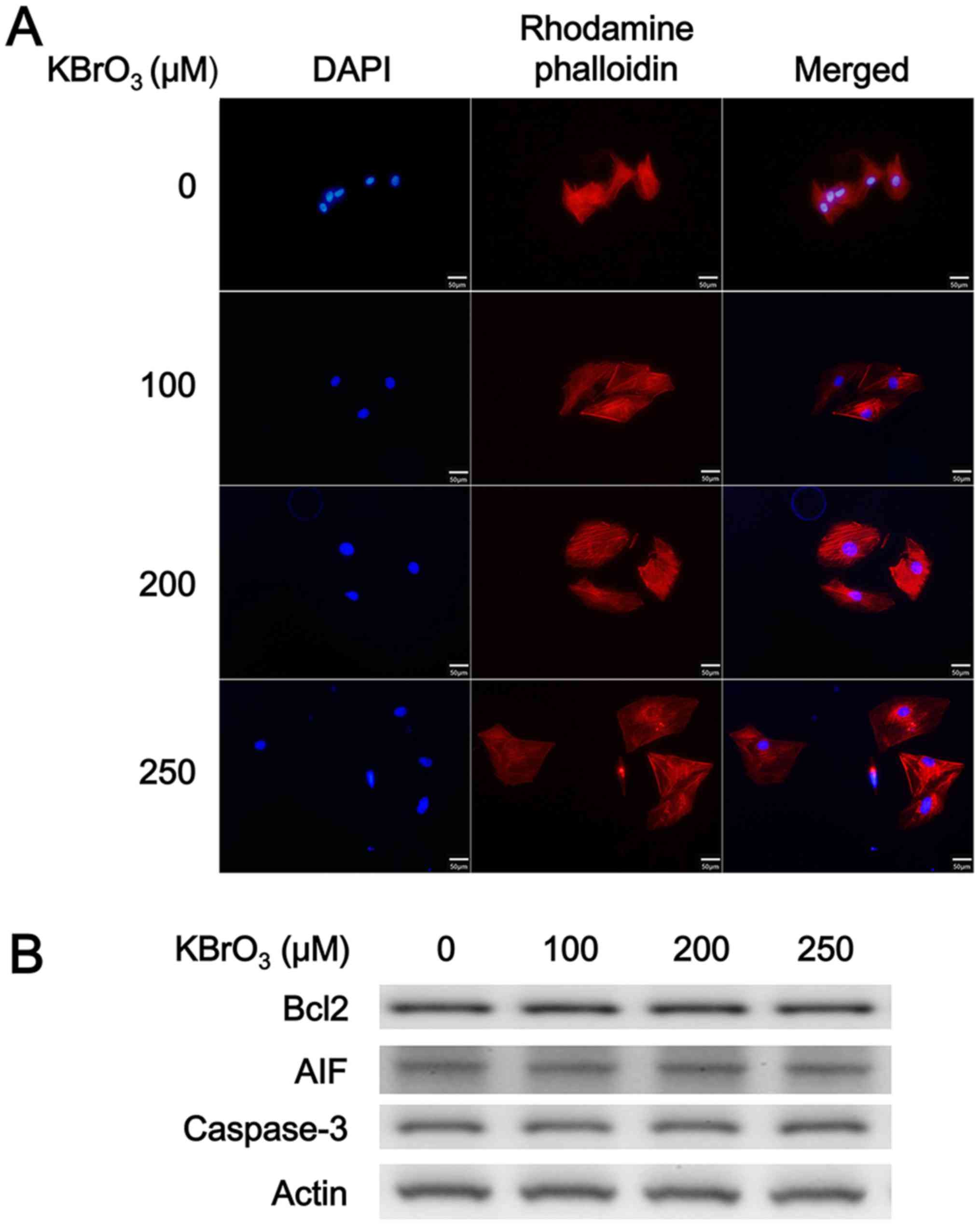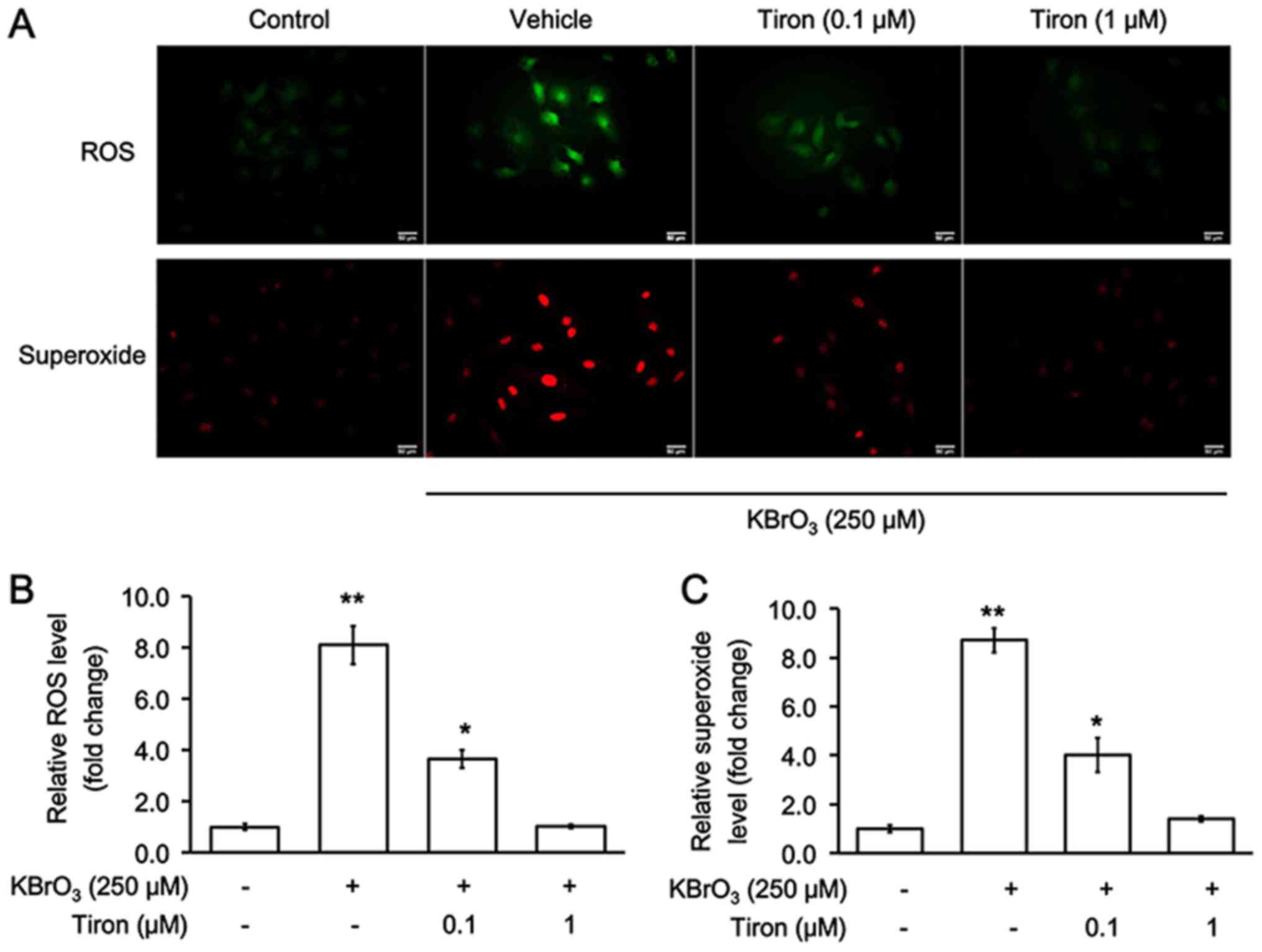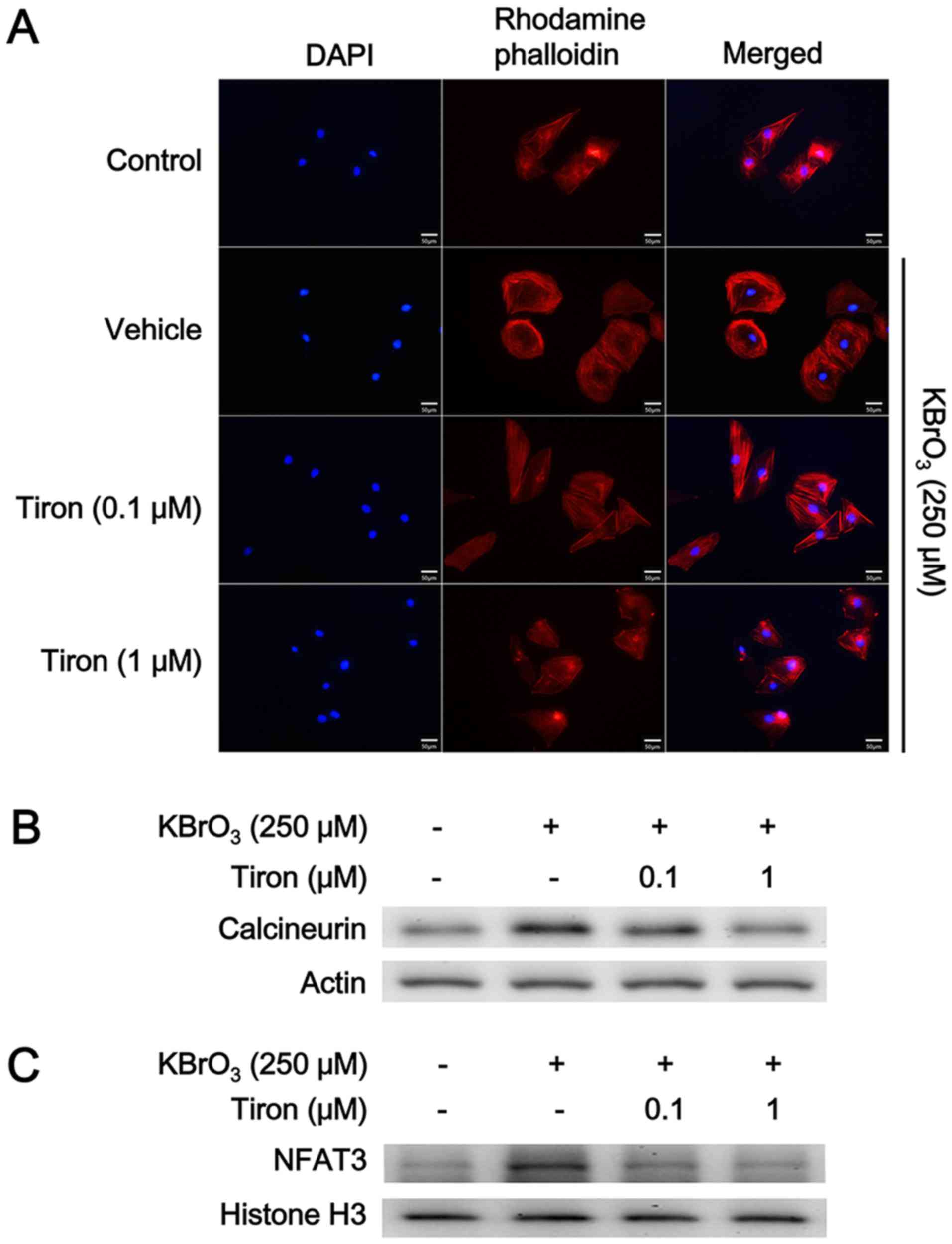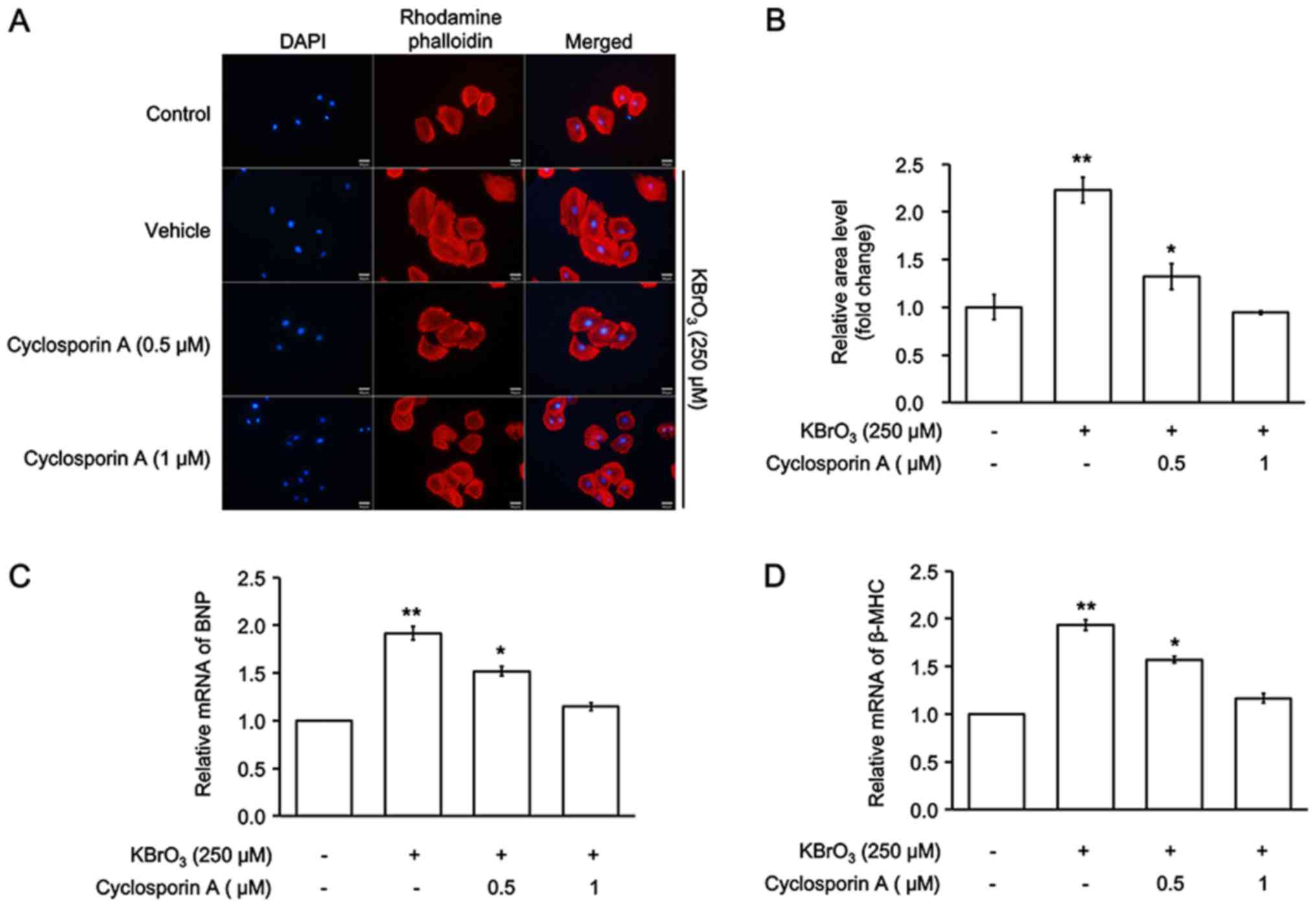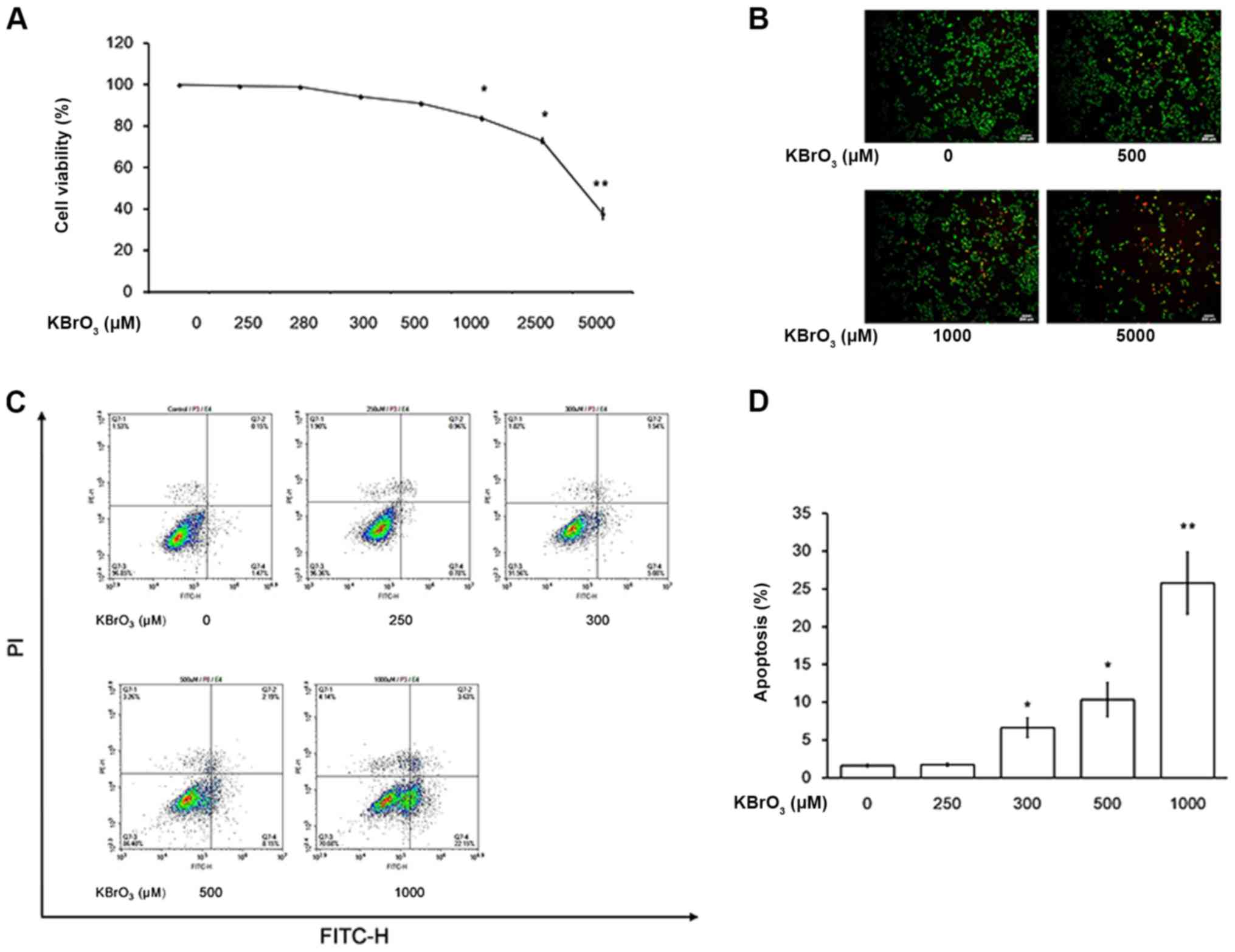|
1
|
Frey N, Katus HA, Olson EN and Hill JA:
Hypertrophy of the heart: A new therapeutic target? Circulation.
109:1580–1589. 2004. View Article : Google Scholar : PubMed/NCBI
|
|
2
|
Glenn DJ, Rahmutula D, Nishimoto M, Liang
F and Gardner DG: Atrial natriuretic peptide suppresses endothelin
gene expression and proliferation in cardiac fibroblasts through a
GATA4-dependent mechanism. Cardiovasc Res. 84:209–217. 2009.
View Article : Google Scholar : PubMed/NCBI
|
|
3
|
Eom GH and Kook H: Role of histone
deacetylase 2 and its posttranslational modifications in cardiac
hypertrophy. BMB Rep. 48:131–138. 2015. View Article : Google Scholar : PubMed/NCBI
|
|
4
|
Glickman MH and Ciechanover A: The
ubiquitin-proteasome proteolytic pathway: Destruction for the sake
of construction. Physiol Rev. 82:373–428. 2002. View Article : Google Scholar : PubMed/NCBI
|
|
5
|
D'Ascenzi F, Pelliccia A, Corrado D,
Cameli M, Curci V, Alvino F, Natali BM, Focardi M, Bonifazi M and
Mondillo S: Right ventricular remodelling induced by exercise
training in competitive athletes. Eur Heart J Cardiovasc Imaging.
17:301–307. 2016. View Article : Google Scholar : PubMed/NCBI
|
|
6
|
Bernardo BC, Weeks KL, Pretorius L and
McMullen JR: Molecular distinction between physiological and
pathological cardiac hypertrophy: Experimental findings and
therapeutic strategies. Pharmacol Ther. 128:191–227. 2010.
View Article : Google Scholar : PubMed/NCBI
|
|
7
|
Heineke J and Molkentin JD: Regulation of
cardiac hypertrophy by intracellular signalling pathways. Nat Rev
Mol Cell Biol. 7:589–600. 2006. View
Article : Google Scholar : PubMed/NCBI
|
|
8
|
Sawyer DB, Siwik DA, Xiao L, Pimentel DR,
Singh K and Colucci WS: Role of oxidative stress in myocardial
hypertrophy and failure. J Mol Cell Cardiol. 34:379–388. 2002.
View Article : Google Scholar : PubMed/NCBI
|
|
9
|
Fiorillo C, Nediani C, Ponziani V,
Giannini L, Celli A, Nassi N, Formigli L, Perna AM and Nassi P:
Cardiac volume overload rapidly induces oxidative stress-mediated
myocyte apoptosis and hypertrophy. Biochim Biophys Acta.
1741:173–182. 2005. View Article : Google Scholar : PubMed/NCBI
|
|
10
|
Parsons JL and Chipman JK: The role of
glutathione in DNA damage by potassium bromate in vitro.
Mutagenesis. 15:311–316. 2000. View Article : Google Scholar : PubMed/NCBI
|
|
11
|
Watanabe S, Togashi S and Fukui T:
Contribution of nitric oxide to potassium bromate-induced elevation
of methaemoglobin concentration in mouse blood. Biol Pharm Bull.
25:1315–1319. 2002. View Article : Google Scholar : PubMed/NCBI
|
|
12
|
DeAngelo AB, George MH, Kilburn SR, Moore
TM and Wolf DC: Carcinogenicity of potassium bromate administered
in the drinking water to male B6C3F1 mice and F344/N rats. Toxicol
Pathol. 26:587–594. 1998. View Article : Google Scholar : PubMed/NCBI
|
|
13
|
Kujawska M, Ignatowicz E, Ewertowska M,
Adamska T, Markowski J and Jodynis-Liebert J: Attenuation of
KBrO3-induced renal and hepatic toxicity by cloudy apple juice in
rat. Phytother Res. 27:1214–1219. 2013. View Article : Google Scholar : PubMed/NCBI
|
|
14
|
Ishidate M Jr, Sofuni T, Yoshikawa K,
Hayashi M, Nohmi T, Sawada M and Matsuoka A: Primary mutagenicity
screening of food additives currently used in Japan. Food Chem
Toxicol. 22:623–636. 1984. View Article : Google Scholar : PubMed/NCBI
|
|
15
|
Priscilla DH and Prince PS:
Cardioprotective effect of gallic acid on cardiac troponin-T,
cardiac marker enzymes, lipid peroxidation products and
antioxidants in experimentally induced myocardial infarction in
Wistar rats. Chem Biol Interact. 179:118–124. 2009. View Article : Google Scholar : PubMed/NCBI
|
|
16
|
Oseni OA, Ogunmoyole T and Idowu KA: Lipid
profile and cardio-protective effects of aqueous extract of moringa
oleifera (lam) leaf on bromate-induced cardiotoxicity on Wistar
albino rats. Eur J Adv Res Biol Life Sci. 3:52–66. 2015.
|
|
17
|
Saad HB, Boudawara O, Hakim A and Amara
IB: Preventive effect of vanillin on lipid peroxides
andantioxidants in potassium bromate-inducedcardiotoxicity in adult
mice: Biochemical andhistopathological evidences. J Pharmacognosy
Phytochemistry. 6:1379–1383. 2017.
|
|
18
|
Khatua TN, Borkar RM, Mohammed SA, Dinda
AK, Srinivas R and Banerjee SK: Novel sulfur metabolites of garlic
attenuate cardiac hypertrophy and remodeling through induction of
Na+/K+-ATPase Expression. Front Pharmacol. 8:182017. View Article : Google Scholar : PubMed/NCBI
|
|
19
|
Chen ZC, Yu BC, Chen LJ, Cheng KC, Lin HJ
and Cheng JT: Characterization of the mechanisms of the increase in
PPARδ expression induced by digoxin in the heart using the H9c2
cell line. Br J Pharmacol. 163:390–398. 2011. View Article : Google Scholar : PubMed/NCBI
|
|
20
|
Zhu W, Zou Y, Shiojima I, Kudoh S, Aikawa
R, Hayashi D, Mizukami M, Toko H, Shibasaki F, Yazaki Y, et al:
Ca2+/calmodulin-dependent kinase II and calcineurin play critical
roles in endothelin-1-induced cardiomyocyte hypertrophy. J Biol
Chem. 275:15239–15245. 2000. View Article : Google Scholar : PubMed/NCBI
|
|
21
|
Asadi F, Razmi A, Dehpour AR and Shafiei
M: Tropisetron inhibits high glucose-induced calcineurin/NFAT
hypertrophic pathway in H9c2 myocardial cells. J Pharm Pharmacol.
68:485–493. 2016. View Article : Google Scholar : PubMed/NCBI
|
|
22
|
Han YH and Park WH: Tiron, a ROS
scavenger, protects human lung cancer Calu-6 cells against
antimycin A-induced cell death. Oncol Rep. 21:253–261.
2009.PubMed/NCBI
|
|
23
|
Oyewole AO and Birch-Machin MA:
Mitochondria-targeted antioxidants. FASEB J. 29:4766–4771. 2015.
View Article : Google Scholar : PubMed/NCBI
|
|
24
|
Lo SH, Hsu CT, Niu HS, Niu CS, Cheng JT
and Chen ZC: Ginsenoside Rh2 improves cardiac fibrosis via
PPARdelta-STAT3 signaling in type 1-like diabetic rats. Int J Mol
Sci. 18(pii): E13642017. View Article : Google Scholar : PubMed/NCBI
|
|
25
|
Li CJ, Lin L, Li H and Yu DM: Cardiac
fibrosis and dysfunction in experimental diabetic cardiomyopathy
are ameliorated by alpha-lipoic acid. Cardiovasc Diabetol.
11:732012. View Article : Google Scholar : PubMed/NCBI
|
|
26
|
Lo SH, Cheng KC, Li YX, Chang CH, Cheng JT
and Lee KS: Development of betulinic acid as an agonist of TGR5
receptor using a new in vitro assay. Drug Des Devel Ther.
10:2669–2676. 2016. View Article : Google Scholar : PubMed/NCBI
|
|
27
|
Livak KJ and Schmittgen TD: Analysis of
relative gene expression data using real-time quantitative PCR and
the 2(-Delta Delta C(T)) method. Methods. 25:402–408. 2001.
View Article : Google Scholar : PubMed/NCBI
|
|
28
|
Wang CM, Hsu CT, Niu HS, Chang CH, Cheng
JT and Shieh JM: Lung damage induced by hyperglycemia in diabetic
rats: The role of signal transducer and activator of transcription
3 (STAT3). J Diabetes Complications. 30:1426–1433. 2016. View Article : Google Scholar : PubMed/NCBI
|
|
29
|
Scudiero DA, Shoemaker RH, Paull KD, Monks
A, Tierney S, Nofziger TH, Currens MJ, Seniff D and Boyd MR:
Evaluation of a soluble tetrazolium/formazan assay for cell growth
and drug sensitivity in culture using human and other tumor cell
lines. Cancer Res. 48:4827–4833. 1988.PubMed/NCBI
|
|
30
|
Calastretti A, Gatti G, Quaresmini C and
Bevilacqua A: Down-modulation of Bcl-2 sensitizes PTEN-mutated
prostate cancer cells to starvation and taxanes. Prostate.
74:1411–1422. 2014. View Article : Google Scholar : PubMed/NCBI
|
|
31
|
Fiedler B and Wollert KC: Interference of
antihypertrophic molecules and signaling pathways with the
Ca2+-calcineurin-NFAT cascade in cardiac myocytes. Cardiovasc Res.
63:450–457. 2004. View Article : Google Scholar : PubMed/NCBI
|
|
32
|
Kwon SH, Pimentel DR, Remondino A, Sawyer
DB and Colucci WS: H(2)O(2) regulates cardiac myocyte phenotype via
concentration-dependent activation of distinct kinase pathways. J
Mol Cell Cardiol. 35:615–621. 2003. View Article : Google Scholar : PubMed/NCBI
|
|
33
|
El-Deeb MEE and Abd-El-Hafez AAA: Can
vitamin C affect the KBrO3 induced oxidative stress on
left ventricular myocardium of adult male albino rats? A
histological and immunohistochemical study. J Microsc Ultrastruct.
3:120–136. 2015. View Article : Google Scholar : PubMed/NCBI
|
|
34
|
Sagnella GA: Measurement and significance
of circulating natriuretic peptides in cardiovascular disease. Clin
Sci (Lond). 95:519–529. 1998. View Article : Google Scholar : PubMed/NCBI
|
|
35
|
Liu N, Chai R, Liu B, Zhang Z, Zhang S,
Zhang J, Liao Y, Cai J, Xia X, Li A, et al: Ubiquitin-specific
protease 14 regulates cardiac hypertrophy progression by increasing
GSK-3β phosphorylation. Biochem Biophys Res Commun. 478:1236–1241.
2016. View Article : Google Scholar : PubMed/NCBI
|
|
36
|
Waspe LE, Ordahl CP and Simpson PC: The
cardiac beta-myosin heavy chain isogene is induced selectively in
alpha 1-adrenergic receptor-stimulated hypertrophy of cultured rat
heart myocytes. J Clin Invest. 85:1206–1214. 1990. View Article : Google Scholar : PubMed/NCBI
|
|
37
|
Younce CW, Wang K and Kolattukudy PE:
Hyperglycaemia-induced cardiomyocyte death is mediated via MCP-1
production and induction of a novel zinc-finger protein MCPIP.
Cardiovasc Res. 87:665–674. 2010. View Article : Google Scholar : PubMed/NCBI
|
|
38
|
Zuo L, Youtz DJ and Wold LE: Particulate
matter exposure exacerbates high glucose-induced cardiomyocyte
dysfunction through ROS generation. PLoS One. 6:e231162011.
View Article : Google Scholar : PubMed/NCBI
|
|
39
|
Goldhaber JI: Free radicals enhance
Na+/Ca2+ exchange in ventricular myocytes. Am J Physiol.
271:H823–H833. 1996.PubMed/NCBI
|
|
40
|
Huynh K, Kiriazis H, Du XJ, Love JE, Gray
SP, Jandeleit-Dahm KA, McMullen JR and Ritchie RH: Targeting the
upregulation of reactive oxygen species subsequent to hyperglycemia
prevents type 1 diabetic cardiomyopathy in mice. Free Radic Biol
Med. 60:307–317. 2013. View Article : Google Scholar : PubMed/NCBI
|
|
41
|
Jiang P, Zhang D, Qiu H, Yi X, Zhang Y,
Cao Y, Zhao B, Xia Z and Wang C: Tiron ameliorates high
glucose-induced cardiac myocyte apoptosis by PKCδ-dependent
inhibition of osteopontin. Clin Exp Pharmacol Physiol. 44:760–770.
2017. View Article : Google Scholar : PubMed/NCBI
|
|
42
|
Khan S, Zhang D, Zhang Y, Li M and Wang C:
Wogonin attenuates diabetic cardiomyopathy through its
anti-inflammatory and anti-oxidative properties. Mol Cell
Endocrinol. 428:101–108. 2016. View Article : Google Scholar : PubMed/NCBI
|
|
43
|
Schröder E and Eaton P: Hydrogen peroxide
as an endogenous mediator and exogenous tool in cardiovascular
research: Issues and considerations. Curr Opin Pharmacol.
8:153–159. 2008. View Article : Google Scholar : PubMed/NCBI
|
|
44
|
Park JH, Lee JH and Park JW: Attenuated
SAG expression exacerbates 4-hydroxy-2-nonenal-induced apoptosis
and hypertrophy of H9c2 cardiomyocytes. Free Radic Res. 49:962–972.
2015. View Article : Google Scholar : PubMed/NCBI
|
|
45
|
Mishra S and Chatterjee S:
Lactosylceramide promotes hypertrophy through ROS generation and
activation of ERK1/2 in cardiomyocytes. Glycobiology. 24:518–531.
2014. View Article : Google Scholar : PubMed/NCBI
|
|
46
|
Abdel Gadir EH, Abdel Gadir WS and Adam
SEI: Effects of various levels of dietary potassium bromate on
wistar rats. J Pharmacol Toxicol. 2:672–676. 2007. View Article : Google Scholar
|
|
47
|
Khan MR, Haroon J, Ali Khan R, Bokhari J,
Shabbir M and Rashid U: Prevention of KBrO3-induced
cardiotoxicity by Sonchus asper in rat. J Med Plants Res.
5:2514–2520. 2011.
|
|
48
|
Kumar S and Pankaj P: Accidental potassium
bromate poisoning in nine adults. J Indian Acad Forensic Med.
34:364–366. 2012.
|



